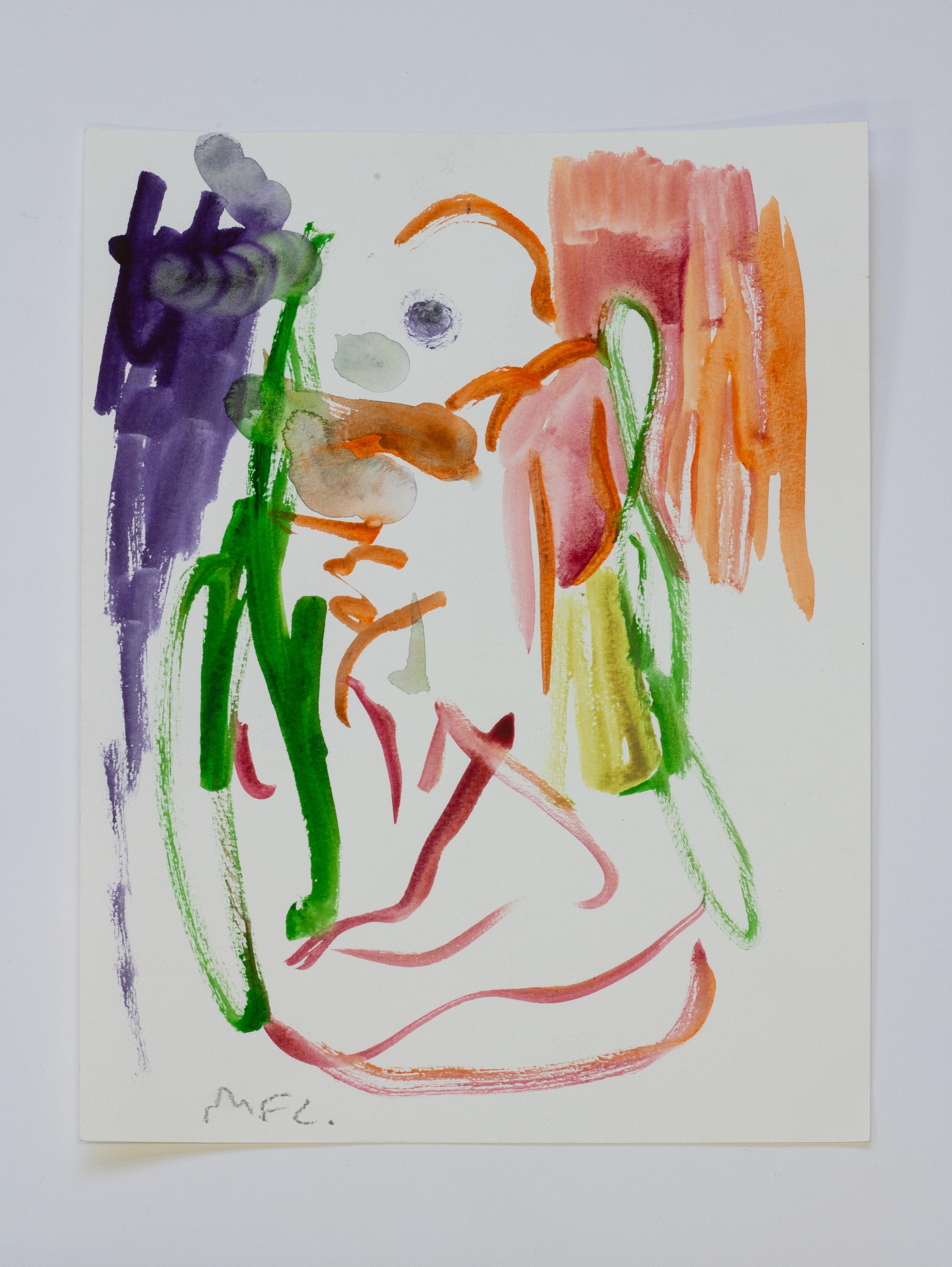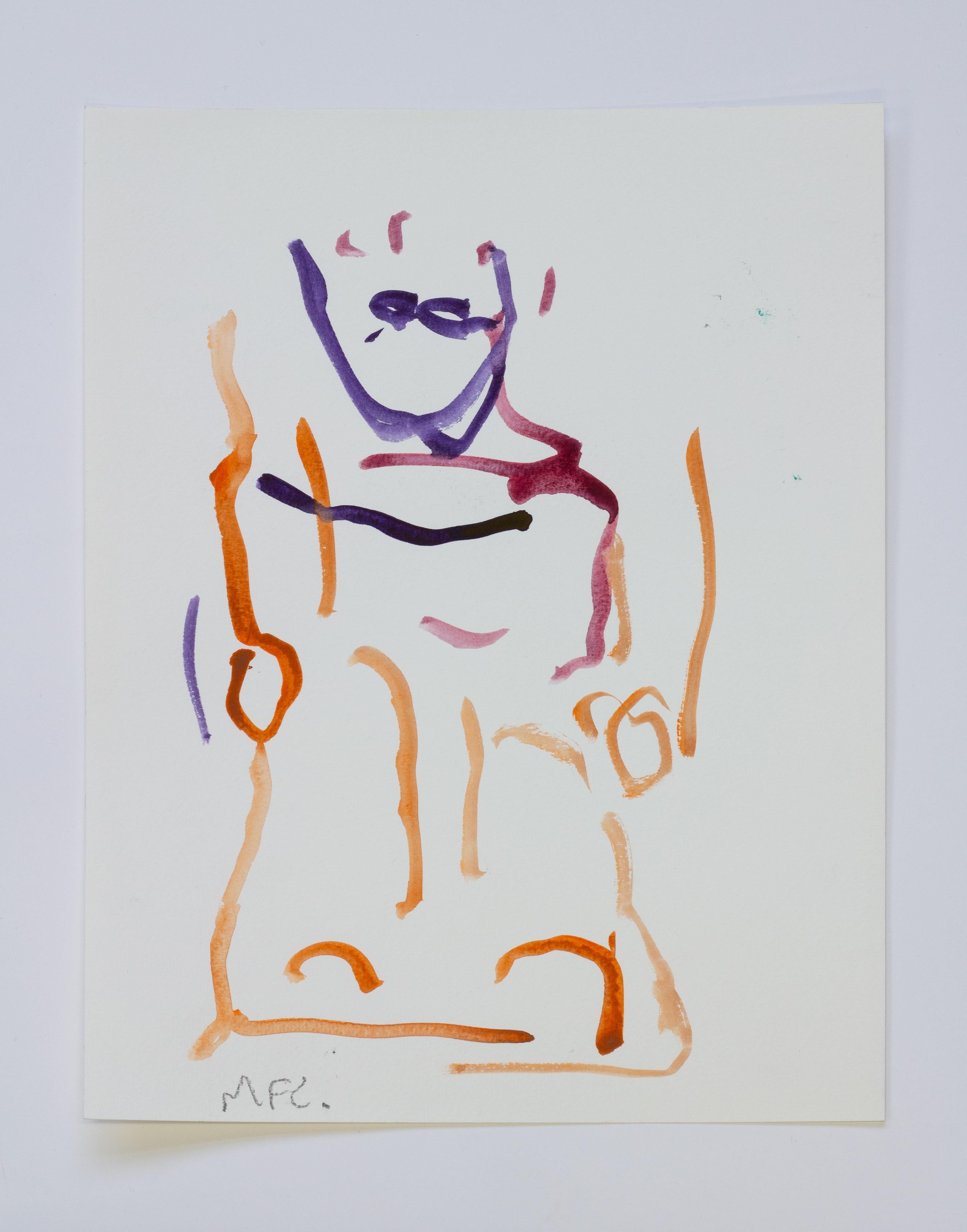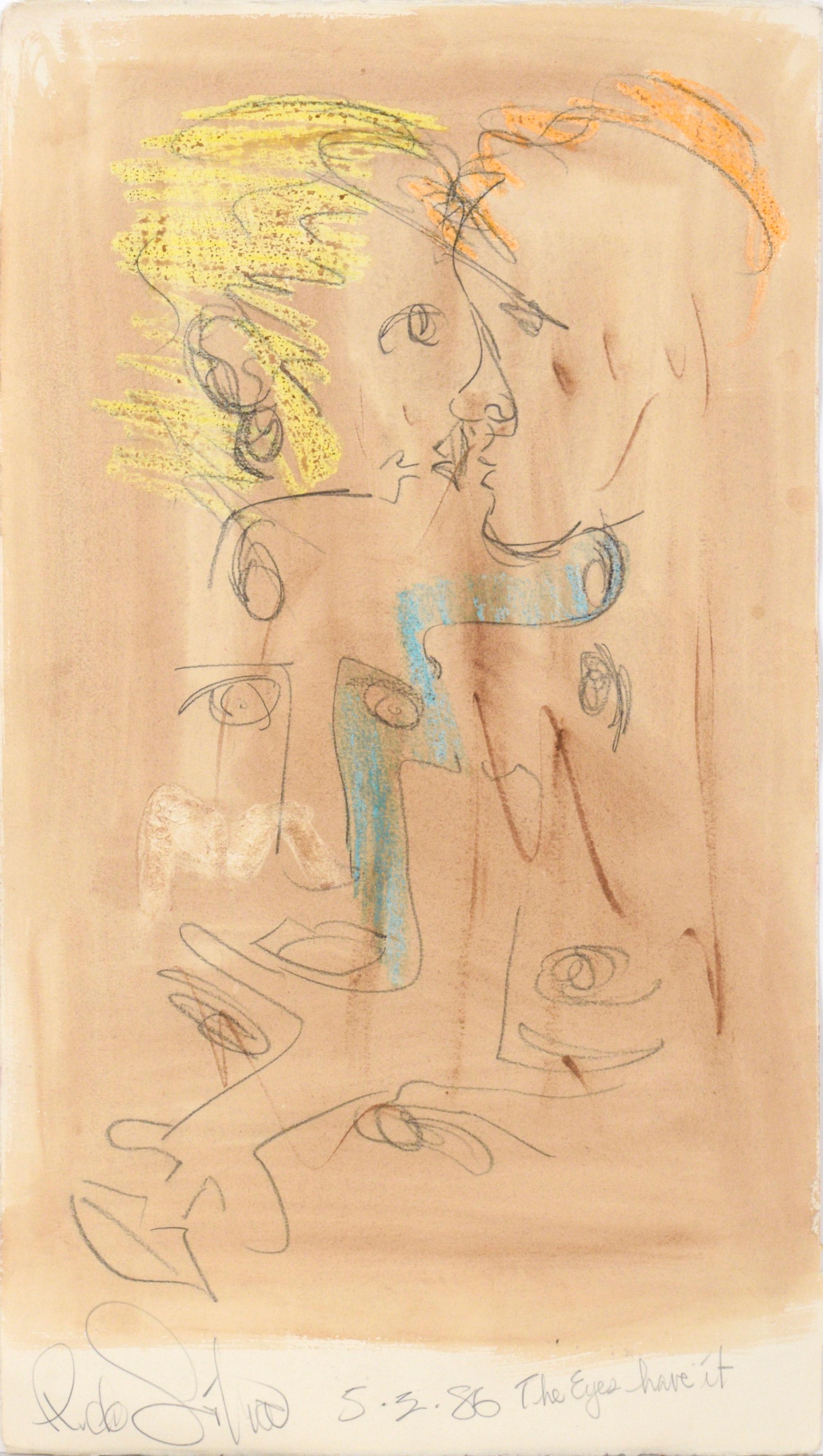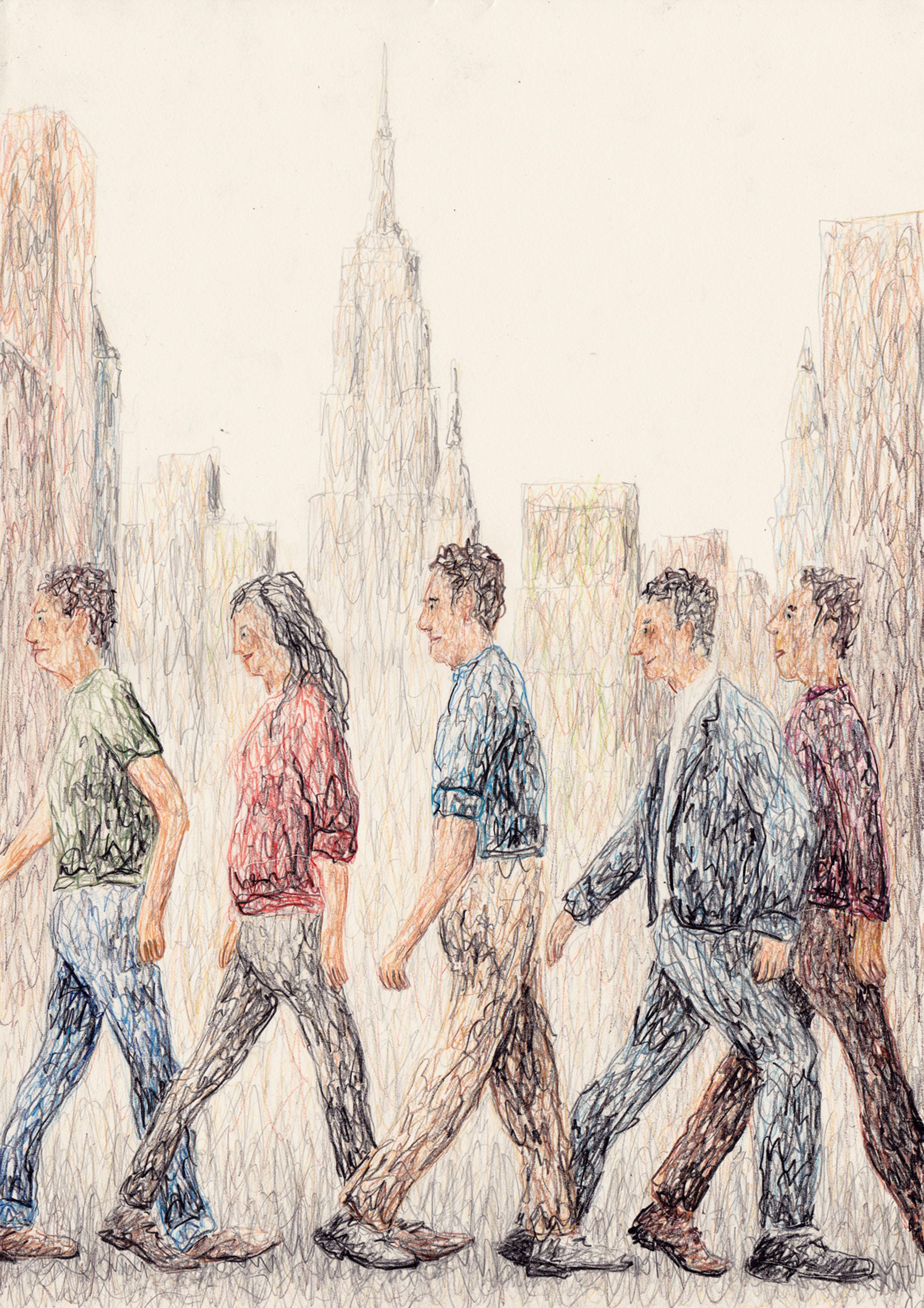Want more images or videos?
Request additional images or videos from the seller
1 of 12
Daniel Ridgway KnightUntitled (Woman working in the fields)1890's
1890's
About the Item
Untitled (Woman working in the fields)
Graphite on wove paper
Unsigned
Exhibited: Spanierman Galleries, In Praise of Women, Oct. 21-Nov. 20, 2010
Illustrated: Lisa N. Peters, In Praise of Women, Spanierman Galleries (see catalog entry in photos)
Condition: Excellent
Sheet size (sight): 14 1//2 x 10 5/16 inches
Provenance: Spanierman Galleries, New York
The young woman is a known model for Knight. She is depicted in numerous paintings. The striped skirt and wooden shoes she wears also is repeated in Knight's oeuvre.
"Daniel Ridgway Knight was born in Philadelphia to a Quaker family and studied at the Pennsylvania Academy of the Fine Arts from 1858 to 1861, the year he became a founding member of the Philadelphia Sketch Club. He went to Paris and studied at the Ecole des Beaux-Arts from 1861 to 1863 with Charles Gleyre (1808-1874) and Alexandre Cabanel (1823-1889), and attended the Accademia di San Lucca, then in Venice, in 1863. Knight returned to Philadelphia that year, married, and served in the Union Army during the Civil War. He went back to France in 1871 and lived there for the remainder of his long and successful career. He settled in Seine-et-Oise near Poissy to study with the noted academic painter Jean-Louis-Ernest Meissonier (1815-1891) in 1873, and the two artists became close friends. Influenced by his French contemporaries Jules Bastien-Lepage (1848-1884) and Jules- Adolphe-Aimé-Louis Breton (1827-1906), during the middle 1870s Knight began to paint sentimental representations of peasant women in their rural settings. As an early biographer noted, the artist was “for the most part the painter of a single class of models—demure little peasant girls with their wooden shoes and picturesque costumes.” His idealized treatment of such subjects was a far cry from the progressive realist works of Jean-Francois Millet (1814-1875) that stressed the hardships of life among French peasants. Knight’s best known painting Hailing the Ferry (1888, Pennsylvania Academy of the Fine Arts) was an immense success that assured his reputation in both the United States and Europe. Knight exhibited most often at the Paris Salon from 1873 until 1921. In the United States he exhibited at the Pennsylvania Academy twelve times between 1858 and 1910, the National Academy of Design in New York from 1870 to 1878, and intermittently at the Brooklyn Art Association. He opened a studio outside Paris in Rolleboise-par-Bonniers in 1896, and selected subjects from the surrounding countryside and local people. Knight won many professional distinctions throughout his long career, and was made a chevalier of the Legion of Honor in 1889 and a knight of St. Michael of Bavaria in 1892. Knight worked as a pictorial propagandist for the French government during World War I. He died in Rolleboise-par-Bonniers."
Courtesy Schwartz Gallery
- Creator:Daniel Ridgway Knight (1839 - 1924)
- Creation Year:1890's
- Dimensions:Height: 14.5 in (36.83 cm)Width: 10.32 in (26.22 cm)
- Medium:
- Movement & Style:
- Period:
- Condition:
- Gallery Location:Fairlawn, OH
- Reference Number:
About the Seller
5.0
Recognized Seller
These prestigious sellers are industry leaders and represent the highest echelon for item quality and design.
Platinum Seller
These expertly vetted sellers are 1stDibs' most experienced sellers and are rated highest by our customers.
Established in 1978
1stDibs seller since 2013
711 sales on 1stDibs
Typical response time: 1 hour
Associations
International Fine Print Dealers Association
- ShippingRetrieving quote...Ships From: Fairlawn, OH
- Return PolicyA return for this item may be initiated within 10 days of delivery.
More From This SellerView All
- Woman on a PatioBy Karl Albert BuehrLocated in Fairlawn, OHWoman on a Patio Pastel on paper, c. 1915 Unsigned Provenance: Gift of the artist to his wife, Mary Hess Buehr By decent to the artist's niece, daughter of Will Hess David Saltzman Robert Henry Adams Fine Art Thomas French Fine Art Ronald C. Sloter, Columbus, Ohio Columbus College of Art and Design (de-accessed) Exhibited at Robert Henry Adams Fine Art, 1994, the first exhibition at the North Franklin Street Gallery. One of the early Chicago artists to adopt Impressionism, Karl Buehr became a figure and landscape painter. As a figure painter, his specialty became "gorgeously colored images of young women on porches overlooking brilliant summertime gardens." (Kennedy 98) His later work often showed a female figure with serious expression engaging the viewer with a direct stare. In his landscapes, he was noted for his strong coloration. In a December 1896 student exhibition at the Art Institute, a reviewer for the "Chicago Times Herald" described Buehr's landscapes as "blithe and joyous" with "country roads brilliant in sunlight . . . fields rich in summer verdure, under soft skies painted in a high, musical key." (Gerdts 68) Buehr was born as one of seven sons to a prosperous German family who immigrated to America and settled in Chicago in 1869. He was first exposed to his signature style of Impressionism in 1888 when he enrolled in night classes at the Art Institute while working in the shipping department of a lithographic firm near the Institute. He remained a student there until 1897 and was recognized in a "Chicago Times Herald" editorial of June 13, 1897 as one of the Institute's most outstanding pupils. The next year, his art career was temporarily put on hold when he briefly enlisted with the U.S. Army in the Spanish American War. In 1899, he resumed his art studies, this time with Frank Duveneck. He exhibited a painting at the Paris Salon of 1900. In 1905, thanks to a wealthy Chicago patron, Buehr and his family moved to France. They spent the following year in Taormina, Sicily, and spent time in Venice as well. In Paris, Buehr studied at the Academy Julian with Raphael Collin for two years. Then he went to England, enrolling in the London Art School but had returned to Paris by 1908. During this time, he began painting at Giverny, the home of Impressionist leader Claude Monet (1840-1926, and by 1912, Buehr was listing that village as his home address. One of his good friends and associates at Giverny was Frederick Frieseke. One of Buehr's paintings from that time, "News from Home", was exhibited in 1913 at the French Salon in Paris and at the annual exhibit of the Chicago Art Institute. It shows a woman in floral dress sitting on a porch with a background with potted flowers and lush greenery background. Of his painting done at Giverny, Buehr wrote in 1912 to William Macbeth of Macbeth Galleries in New York: "My figures painted in and around Giverny are costumed and in appropriate out door settings." (Gerdts 68) In 1914, he returned to the United States and took a teaching position in Chicago at the Art Institute, which he held for the remainder of his life. He was married to Mary Hess, a painter of miniatures and decorative works. In 1928-29, he was a guest artist at Stanford University. Courtesy, AskArt “Karl Albert Buehr (1866–1952) was a painter born in Germany. Buehr was born in Feuerbach - near Stuttgart. He was the son of Frederick Buehr and Henrietta Doh (Dohna?). He moved to Chicago with his parents and siblings in the 1880s. In Chicago, young Karl worked at various jobs until he was employed by a lithograph company near the Art Institute of Chicago. Introduced to art at work, Karl paid regular visits to the Art Institute, where he found part-time employment, enabling him to enroll in night classes. Later, working at the Institute as a night watchman, he had a unique opportunity to study the masters and actually posted sketchings that blended in favorably with student's work. Having studied under John H. Vanderpoel, Buehr graduated with honors, while his work aroused such admiration that he was offered a teaching post there, which he maintained for many years thereafter. He graduated from the Art Inst. of Chicago and served in the IL Cav in the Spanish–American War. Mary Hess became Karl's wife—she was a student of his and an accomplished artist in her own right. In 1922, he was elected into the National Academy of Design as an Associate member. Art Studies in Europe In 1904, Buehr received a bronze medal at the St. Louis Universal Exposition, then, in 1905, Buehr and his family moved to France, thanks to a wealthy Chicago patron, and they spent the following year in Taormina, Sicily, where the artist painted local subjects, executing both genre subjects and landscapes as well as time in Venice. Buehr spent at least some time in Paris, where he worked with Raphaël Collin at the Académie Julian. Giverny and American Impressionism Prior to this time, Buehr had developed a quasi-impressionistic style, but after 1909, when he began spending summers near Monet in Giverny, his work became decidedly characteristic of that plein-air style but he began focusing on female subjects posed out-of-doors. He remained for some time in Giverny, and here he became well-acquainted with other well known expatriate America impressionists such as Richard Miller, Theodore Earl Butler, Frederick Frieseke, and Lawton Parker. It seems likely that Buehr met Monet, since his own daughter Kathleen and Monet’s granddaughter, Lili Butler, were playmates, according to George Buehr, the painter’s son. His other daughter Lydia died before adulthood due to diabetes. He returned to Chicago at the onset of World War I and taught at The Art Inst for many years. One of his noted pupils at the Art Institute was Archibald Motley...Category
1910s Abstract Impressionist Figurative Drawings and Watercolors
MaterialsPastel
- Sketch of a woman's head in profileBy Sir William OrpenLocated in Fairlawn, OHSketch of a woman's head in profile Graphite on paper, c. 1900-1910 Unsigned Condition: Excellent Tiny tear upper right near hinge (repaired and bearly visible) Sheet size: 4 5/8 x 3...Category
1910s Impressionist Figurative Drawings and Watercolors
MaterialsGraphite
- Preliminary Study for the painting Rose and Gold, 1913By William McGregor PaxtonLocated in Fairlawn, OHPreliminary Study for the painting Rose and Gold, 1913 Graphite on paper, 1913 Signed in pencil lower left (see photo) Titlted "Lizzy Young" in pencil upper left (see photo) Lizzy was a modle that Paxton depicts numerous times. The painting that this drawing is related to, is illustrated in Lee & Krause, William McGregor Paxton, 1869-1941, Plate 32, text on page 132. The painting was formerly in the collection of Victor Spark and the Honorable Paul Buchanan. It is currently in a Texas Collection. Provenance: Private Collection, Florida William McGregor Paxton (June 22, 1869 – 1941) was an American painter and instructor who embraced the Boston School paradigm and was a co-founder of The Guild of Boston Artists. He taught briefly while a student at Cowles Art School, where he met his wife Elizabeth Okie Paxton, and at the Museum of Fine Arts School in Boston. Paxton is known for his portraits, including those of two presidents—Grover Cleveland and Calvin Coolidge—and interior scenes with women, including his wife. His works are in many museums in the United States. Early life He was born on June 22, 1869, in Baltimore to James and Rose Doherty Paxton. William's father moved the Paxton family and established a catering business in Newton Corner, Massachusetts, in the mid-1870s. Education Paxton attended Cowles Art School on a scholarship he attained at the age of 18. He studied with Dennis Miller Bunker...Category
1910s American Impressionist Figurative Drawings and Watercolors
MaterialsGraphite
- Preliminary study for Cretan Dancer bronze sculptureBy Boris Lovet-LorskiLocated in Fairlawn, OHPreliminary study for Cretan Dancer bronze sculpture Unsigned Graphite on tracing paper, 1930-1934 Sheet size: 6 7/8 x 7 1/8 inches Created while the artist was woring in Paris, c. 1930 “The stylizing of the Cretan allegories, used in figures of animals such as horses and bulls, symbolizes the ancient power of the South. These figures reveal a spiritual sensuality as he strives to attain a symbol of the earth and universe endowed with musical values. If man is the center of his idea of life and nature, it is because of the laws that govern the movement of stars and history. The link binding his figures together has, in a sense, a Pythagorean harmony.” Salvatore Quasimodo, Milan, 1967, quoted from Bush, Boris Lover-Lorski: The Language of Time, page 12. Regarding the artist: Boris Lovet-Lorski Lithuanian/Russian/American 1894-1973 Sculptor, painter, and printmaker, Boris Lovet-Lorski was born in Lithuania in 1894. His mother died when he was age three. His father was affluent and owned real estate. Boris grew up in a privileged environment. He studied architecture and then fine arts at the Imperial Academy of Art in Petrograd, Russia (now Saint Petersburg). Following the revolution in 1917 and its aftermath, Boris immigrated to Boston to live with his brother. In the 1920’s, his stylized, Art Deco inspired sculptures, lithographs, and paintings proved to be popular among the American elite. He exhibited frequently, holding his first solo exhibition in Boston, 1920. In the following years, Boris exhibited in New York at Marie Sterner Gallery, Jacques Seligmann Galleries and Wildenstein and Company. He lived in Paris from 1926 to 1932 where he befriended Joseph Hecht, and was exposed to the works of Pablo Picasso, Ossip Zadkine, Contantin Brancusi and Aristide Maillol. In 1932 he returned to America where he became a citizen later in the decade. Lovet-Lorski exhibited in the United States, South America, Europe and Asia. He was a member of the Society of Independent Artists (New York), the National Academy of Design (New York), and the Lotos Club (New York), as well as several Parisian salons. His work is in the permanent collections of numerous museums including the Musée Luxembourg, Bibliotèque Nationale, and the Petit Palais in France, the British Museum in London, the Metropolitan Museum in New York, the National Gallery in Washington, the Los Angeles County Museum of Art. (A more extensive list of his works in museums follows) He is considered one of the most successful and recognized sculptors of his generation. His creative influence can be seen in many of his contemporary artists. He died in Los Angeles in 1973. Regarding his iconic Art Deco sculptures of Cretan Dancers: “The stylizing of the Cretan allegories, used in figures of animals such as horses and bulls, symbolizes the ancient power of the South. These figures reveal a spiritual sensuality as he strives to attain a symbol of the earth and universe endowed with musical values. If man is the center of his idea of life and nature, it is because of the laws that govern the movement of stars and history. The link binding his figures together has, in a sense, a Pythagorean harmony.” Salvatore Quasimodo, Milan, 1967, quoted from Bush, Boris Lover-Lorski: The Language of Time, page 12. Lovet-Lorski created sculptures of the following major figures I.J. Paderewski, Prime Minister of Poland Arturo Toscanini, Italian Conductor Lilian Gish, Actress President Franklin D. Roosevelt Mrs. M. C. Niarchos, wife of Stavros Niarchos President Abraham Lincoln James Forrestal, Secretary of the Navy, First Secretary of Defense Pope Pius XII Dr. Albert Einstein, theoretical physicist President Dwight D. Eisenhower Albert Schweitzer, theologian, organist, writer, humanitarian, philosopher, and physician General Charles De Gaulle, President of the Fourth and Fifth Republic, France John Foster Dulles, Secretary of State, 1953-1959 President John F. Kennedy Works by Lover Lorski are in the following public collections: Albright-Knox Art Gallery, Buffalo Art Institute of Chicago Bibliotheque Nationale, Paris Brandeis University, Waltham, MA British Museum, London Boston University Brooklyn Museum California Palace of the Legion of Honor, Sam Francisco...Category
1930s Art Deco Figurative Drawings and Watercolors
MaterialsGraphite
- Untitled (Standing man with umbrella behind)By Charles MaurinLocated in Fairlawn, OHUntitled (Standing man with umbrella behind) Graphite on paper, c. 1890's Unsigned Provenance: Estate of the Artist Lucien Goldschmidt (1912-1992), noted art ...Category
1890s French School Figurative Drawings and Watercolors
MaterialsGraphite
- Seated Woman, Left Hand to ChinBy William H. BaileyLocated in Fairlawn, OHSeated Woman, Left Hand to Chin Graphite on laid paper, 1984 Signed and dated in pencil (see photo) Provenance: Donald Morris Gallery, Inc. Birmingham, MI ...Category
1980s American Realist Figurative Drawings and Watercolors
MaterialsGraphite
You May Also Like
- UntitledLocated in København S, DKExplore Mila Francesca Cali's abstract watercolors, inspired by her plein-air studies of space and nature. With echoes of modernist painting in a contemporary context, each piece res...Category
2010s Abstract Impressionist Figurative Drawings and Watercolors
MaterialsWatercolor, Pencil
- UntitledLocated in København S, DKExplore Mila Francesca Cali's abstract watercolors, inspired by her plein-air studies of space and nature. With echoes of modernist painting in a contemporary context, each piece res...Category
2010s Abstract Impressionist Figurative Drawings and Watercolors
MaterialsWatercolor, Pencil
- UntitledLocated in København S, DKExplore Mila Francesca Cali's abstract watercolors, inspired by her plein-air studies of space and nature. With echoes of modernist painting in a contemporary context, each piece res...Category
2010s Abstract Impressionist Figurative Drawings and Watercolors
MaterialsWatercolor, Pencil
- The Lovers "The Eyes Have It" Figurative Abstract Watercolor and Pencil on PaperLocated in Soquel, CAThe Lovers "The Eyes Have It" Figurative Abstract Watercolor and Pencil on Paper A whimsical figurative painting by California-based artist Ricardo de Silva (Brazilian, 20th Century...Category
1980s Abstract Impressionist Figurative Drawings and Watercolors
MaterialsAcrylic, Paper, Pencil
- 42A410By Hans Van MeeuwenLocated in Boston, MAArtist Commentary: no comment..... Keywords: representaional, people, humor, surreal, imaginationCategory
21st Century and Contemporary Abstract Impressionist Figurative Drawings...
MaterialsColor Pencil, Paper
- 48A315By Hans Van MeeuwenLocated in Boston, MAArtist Commentary: We all run around, pretending we are very imporatnat and very busy.... Keywords: representational, architecture, street scenes, peopleCategory
21st Century and Contemporary Abstract Impressionist Figurative Drawings...
MaterialsColor Pencil, Paper





